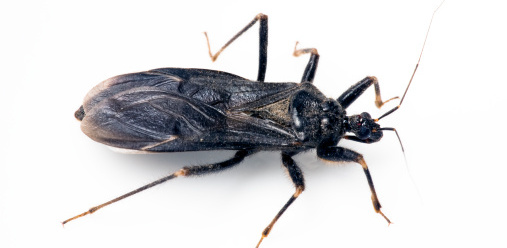The ‘Kissing Bug’ Disease: What You Need To Know
Chagas disease, also known as the ‘kissing bug’ disease, is an infection that is affecting more and more Americans every year. Since this disease has primarily been found in places like Mexico as well as South and Central America, many people in the United States, including physicians, are unfamiliar with it. However, the last few years have seen cases turning up in the United States. Most people are believed to have been infected abroad, but recently more of these infections have been contracted locally.
The kissing bug (also known as the triatomine bug, reduviid bug, assassin bug, cone-nosed bug, or blood sucker) includes many different species that can all carry the parasite Trypanosoma cruzi that causes Chagas disease. These insects can be found both indoors and outdoors, particularly in the cracks and holes found in substandard housing. They are found across the southern two-thirds of the United States, but the parasite is generally found in the triatomine bugs from Latin America. There are other bugs that resemble this insect (like the assassin bug or the wheel bug), so if one is found it can be taken to an entomologist for positive identification.
Fortunately, contracting Chagas disease from kissing bugs is rather difficult – an individual needs to contact the insect’s feces through a wound (like the bite wound that the insect makes, often on the face) or a mucous membrane (like the mouth or the eyes.) Some people are allergic to the insect’s saliva, but this does not mean that they have contracted the disease. Signs of an allergic reaction include redness, itching, swelling, and welts or hives. In rarer cases this reaction can cause anaphylactic shock.
In the event that someone does contract Chagas disease there may be a mild swelling at the site where the parasite entered the body – this is known as a chagoma. Romaña’s sign is swelling around the eye if the eye was the parasite’s inoculation point. The chagoma or Romaña’s sign both last longer than an allergic reaction and are not nearly as itchy. Other than the potential swelling and fever, there are very few early signs for Chagas disease. In rare cases there may be severe inflammation around the heart muscle, brain, and lining of the brain.
If a person remains untreated they can enter a chronic phase of disease where very few or no parasites are found in their blood, making diagnosis difficult. Many people will remain symptom free and never know they have the disease, but 20-30% can develop symptoms. These symptoms include heart rhythm abnormalities that can cause sudden death, a dilated heart that doesn’t pump well, and a dilated esophagus or colon that makes it difficult to eat or to pass stool.
Chagas disease can be spread through blood transfusions, organ transplants, and congenitally from mother to child. Many people have been notified that they test positive for the parasite after donating blood, despite not being aware that they had it. Two drugs can be used to treat the disease if it is caught early enough – nifurtimox and benznidazole. Due to the more “exotic” nature of this disease many physicians aren’t familiar with it. If you are concerned that you may have been exposed to or contracted Chagas disease you can talk to your physician or seek one familiar with the disease here: http://www.astmh.org/source/ClinicalDirectory/

